
Here it is, the granddaddy of them all. The comics industry is built around ongoing series, and our staff thinks these are the best of the year. Let’s get to it!
10. Paper Girls (tie)

’80s nostalgia is still in full force in our popular culture. Some of our throwbacks are nominal, like a just look at this thing that takes place in the ’80s. Some are rose-tinted love letters to a dreamed-of era, rather than an experienced one. And some are “Paper Girls.” In 2018, the Image series from Brian K. Vaughan and Cliff Chiang, all but abandoned its original setting, keeping skipping back and forward in time in this wild adventure. But like the stuff we remember best from our early years, it uses its multiple timelines to explore its characters. We have characters who are suddenly starting to discover themselves while their friends have to deal with their preconceived notions about said identity. We have these teenagers confronting their older selves and being forced to deal with the disappointment of adulthood. All this while also exploring a rise of totalitarianism and “for the good of all”-ism. No doubt this book bites off a lot but Vaughan and Chiang’s impeccable balance of theme and entertainment, of spectacle and small character moments, of crazy futures and forgotten pasts, make this a title that stands out year after year. – Matt Garcia
10. Sleepless
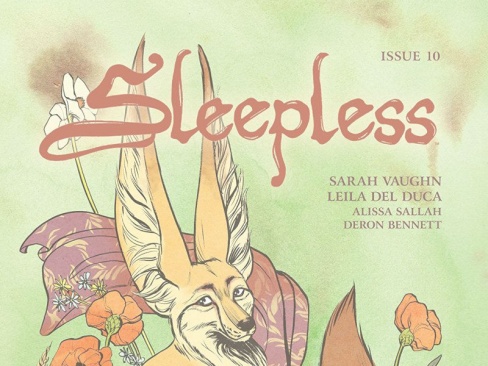
The story of Poppy and her Sleepless Knight, Cyrenic, feels like a truly fresh idea, even though it uses a lot of familiar fantasy elements. It’s a world where magic may not be in the forefront but is lurking just underneath the surface in the fantastical creatures and the mysterious process The Sleepless go through in order to take their vows. Sarah Vaughn and Leila Del Luca have taken some well-trodden fantasy tropes, and put enough new twists on them to create one of the best fantasy stories in the past few years.
Del Luca and colorist Alissa Sallah’s artwork is a major part of the book feeling so fresh. The painterly style makes the images feel straight from an illustrated epic, and the color palette feels exotic. It’s clear that this is not just another sword and sandals medieval world. The character artwork is especially effective, doing a lot of the world-building just by character designs. You can feel the strain the Sleepless Knights are under, just by the way they are drawn and colored.
“Sleepless” already feels like something special. In less than a year’s worth of issues, the world feels vibrant and lived in, and I’m invested completely in the characters’ lives. The series is scheduled to end soon, but I can only hope the creators decide to revisit this world again.- Justin Beeson
9. Monstress
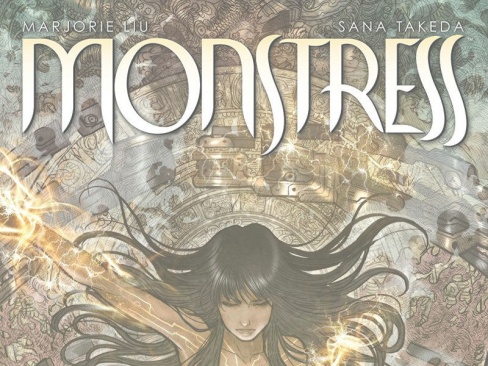
People finally caught onto this book, huh?
The winner of five 2018 Eisner Awards (Best Writer, Best Painter/Multimedia Artist, Best Cover Artist, Best Publication for Teens, Best Continuing Series) alongside Hugo and British Fantasy Awards simultaneously feels like it shot out of a cannon this year and still feels underrated. Marjorie Liu and Sana Takeda’s work only saw six issues this year but it is surely quality over quantity. The pair have created a world that is unlike anything else going right now and this year’s arc, ‘Haven,’ has only turned the heat up.
I’ve always had a comparison between “Monsterss” and fellow Image book “Lazarus.” Both books created vast and interesting worlds in a short amount of time. However, where “Lazarus” sometimes stumbles is that its protagonist feels like it gets in the way of the interesting bits, but “Monstress” in 2018 really saw Maika be a full part of that world while also allowing for a good bit of development. It saw Maika grow and change, influenced by those she travels with. Something that may have contribute is that Liu tweaked what I found a bit of a flaw in the first two arcs: an overreliance on Maika’s internal monologue which would borderline on the repetitive.
What else can truly be said about Sana Takeda’s artwork for this book? The woman is turning in the work of her career every issue with extremely detailed, and yet wonderfully smooth painted works. Whether depicting the mundane of city streets to the fantastical of the supernatural forces at work in this world, every bit of it has been rendered to polished sheen and she shows little sign of stopping. To put it simply, no other artist can do the things for “Monstress” that Takeda has been doing. Any other would seem a poor imitator. – Ken Godberson III
Continued below8. Deathstroke
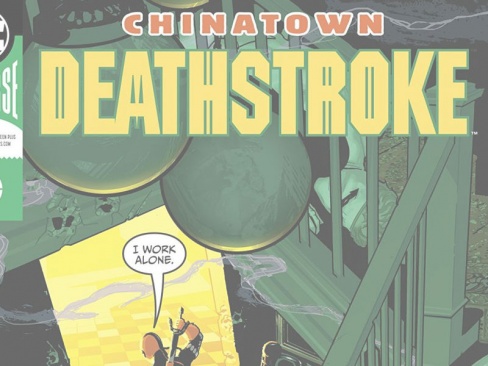
One of the best calls DC made during Rebirth was handing Christopher Priest the reins to “Deathstroke.” When it was announced, I was conflicted at first. On one hand, I’ve got nothing but the highest respect for Priest. He’s an amazing comic book writer, his career spanning back to the 1980s. Priest’s original creations Quantum and Woody are around to this day and he blessed us with the definitive run on “Black Panther”. On a personal note, as a black comic book reader, black writers and artists have always held a special place in my heart.
On the other hand, it seemed like Priest might have gotten the short end of the stick. During the New 52, “Deathstroke” cycled through two ongoings, neither of which grabbed my attention. As great as he is, I thought that Priest wouldn’t be able to do much with the character and DC had made a mistake. Well…turns out, the professional comic book publisher may know better than me now and again. The 2017 Eisner Award Nominee is still firing on all cylinders.
The story has always been a compelling read with intriguing characters. In “Deathstroke,” Slade Wilson is fully-formed and three-dimensional. He was abused as a child and is an emotionally distant father. He’s haunted by the death of his eldest son who followed in his footsteps. He’s made an earnest attempt at redemption only for it to all come crashing down this year. This is the man who would rather punch Batman in the face than he admit he admires the Dark Knight. Deathstroke has been dragged through hell and he’s such a mess, he’s not making it any easier on himself.
Even though the titular character is the focus, “Deathstroke” is a gripping family drama. Wintergreen is Slade’s ‘Alfred,’ willing to manipulate people and play mastermind to try and get Slade back on the right track. There’s Joseph and Rose, who have the expected father issues (you’d be a mess too if you were raised by Slade) and more struggles on top of those. Joseph has struggled with substance abuse and his sexuality while Rose has struggled with her racial identity. These can be tricky topics to navigate, but Priest has done so in a way that feels natural.
The artists that have worked on this title with Priest have all done great work. The title has cycled through Diogenes Neves, Carlo Pagulayan and Fernando Pasarin this year but the art has never suffered. The storytelling has continued to be top-notch as well. This year Deathstroke went from mentor and fledgling hero, crashing back down to mercenary and now he’s an Arkham Asylum patient. Right now, Slade is in an unsure position but I like it. I have no idea where Priest will take this title in 2019 but I can’t wait. – Michael Govan
7. Royal City
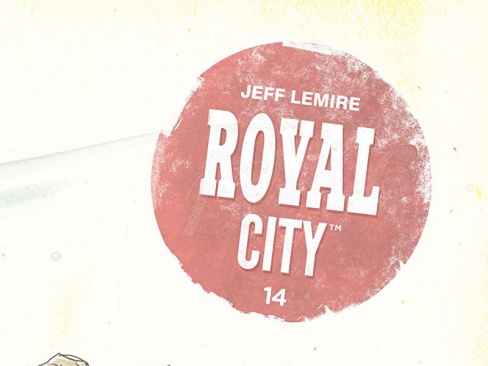
It isn’t news that Jeff Lemire is doing great things right now, nor is it news that his more personal stuff tends to resonate better with a lot of folks, myself included. That still didn’t prepare me for “Royal City,” Jeff’s relatively brief, but incredibly emotional and moving meditation of family, death, guilt, and moving on. The second year of the series took some real storytelling risks and leaps, and led to one of the most satisfying and earned endings of a series in recent memory.
Though Lemire had originally planned a much longer series, 14 issues proved to be the right length for this story, and the final three issues serve as a masterclass for how to bring a story together for a conclusion, without tying up every single loose end or cutting off the possibility of more down the road. But even if this is the last we ever see of the Pike family, Lemire’s lovingly crafted, utterly relatable story will stand as one of the most honest and moving comics in recent memory. – Brian Salvatore
6. Saga
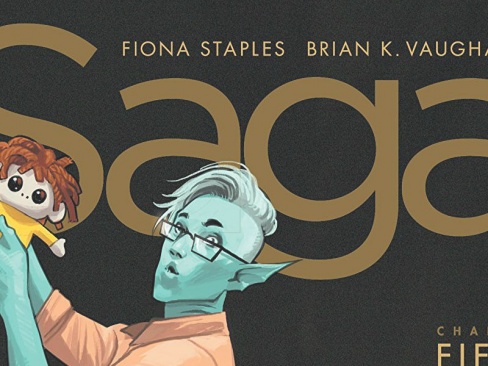
Ever since Brian K. Vaughan and Fiona Staples’s “Saga” emerged on the comics scene in 2012, it’s remained one of the most consistent and emotional series available. This year’s arc provided some of the series’ most shocking moments to date. Unfortunately, when the last issue of the arc came out, it was announced that the series will be on hiatus until at least next July, so if you’re not reading this series, now is the perfect time to catch up, just be sure to buckle up for one heck of a ride.
Continued belowOver the years, Brian K. Vaughan has built a strong contingent of diverse and interesting characters for the series and in this year’s issues, we see our group of heroes altogether, and, for a brief moment at least, there’s hope for them. As we’ve come to learn with this series, hope is always bittersweet because tragedy is likely to follow and Vaughan continues in this vein to deliver some of the most heartbreaking twists the series has seen.
Fiona Staples continues to present the wild and ever changing landscapes and the creatures that inhabit them with ease. Take the Mustached Kingfish that bursts out of the water in issue #51 for example. Staples blurring of pastel colors on the Kingfish instils it with wonder that we can understand Doff’s desperation to chase after it to take a picture. As well as excelling in bringing the fantastical to life, Staples always grounds the book through the distinctly human emotions the characters express, even if some of them are robots. It speaks volumes for an artist when a writer is able to leave the finale of an arc almost without dialogue, like Vaughan does here, and Staples delivers an issue that will leave you shell shocked. Once you recover, you’ll be left desperately waiting for the hiatus to be over. – Luke Cornelius
5. The Wild Storm

DC has a handful of titles that are some of the best books on store shelves today, but for my money “The Wild Storm” is the best. This was the year for the series which paid off huge plot threads and retained the excellent creative team of writer Warren Ellis and artist Jon Davis-Hunt. Ellis and Davis-Hunt have been slowly building a new vision for “The Wild Storm” universe and carefully laying in a huge supporting cast while building towards a sci-fi war.
Everything in “The Wild Storm” feels like it is meticulously planned out and detailed. As a result, readers had to give the series a lot of breathing room before the true pay-off came in some of the Thunderbook issues of the series over the past few months. These Thunderbook scenes introducing Jon Lynch contained some of the pulse-pounding action sequences from this year. The creative team’s dedication to experimentation in the medium of comics has turned artist Jon Davis-Hunt into one of my favorite new talents working at DC.
Each issue with a Thunderbook plot thread hosted some of the craziest, off-the-wall action sequences modern comics can hope to deliver. Ellis cuts the lion share of the dialogue in these big action moments and allows for Davis-Hunt’s art to control the pace of the story. Whenever the dialogue stops, readers anticipate some kind of horrible violent sequence to push the medium of comics forward. Every single month when I pick up the title and see the pacing start to slow down, I anticipate Ellis and Davis-Hunt to deliver a solid ‘oh shit’ moment.
On top of the wonderful action sequences, Ellis has been building up the forces behind Skywatch and I.O. for a considerable amount of time. This series is about the war between the two factions and the most recent installment teased an impending resolution. Introducing so many characters and paying off previous plot threads is leading me to believe that the upcoming installments in 2019 are going to put this series right back on the ‘best of’ list come next year.
It seems like a title like this should be an afterthought. There should be a great superhero, sci-fi drama with a huge group of cast members going for a really slow burn, but few titles out there are willing to take such a big risk. Right now “The Wild Storm” is at an all-time peak level of quality and if you haven’t caught up, reading the book in a collected format is going to be incredibly satisfying. The scripts in the series are great, but readers owe it to themselves to see the wonderful collaboration Ellis has with Jon Davis-Hunt who is not getting the recognition he deserves for his tremendous talent. – Alexander Jones
4. Justice League

There seems to be two essential ways of looking at the “Justice League” series: either as a way to showcase less-known characters on different lenses, or to reaffirm a core group of heroes in the largest adventures possible. It is then, perhaps, the union of these two approaches that makes the current run on “Justice League” so remarkable. While it surely presents some of the main, most powerful character the DC Universe has to offer, it also serves as the primary connective tissue among that sandbox. For the same entertainment readers obtain from seeing Superman and Batman act truly as the world’s finest, it also includes Firestorm, Adam Strange, Starman, among others. At times, it feels like a Mission: Impossible of comics, with individual skills, powers and personalities being pulled in.
Continued belowBeyond that initial groundwork, Justice League also succeeds due to the opposition of themes and world views among justice and doom, across the power of doing what is right, versus the acceptance of man’s ultimate negative influence. Put in the spotlight by focusing on Martian Manhunter (probably the main stalwart of the League) versus Lex Luthor (the seminal super-villain and leader of the Legion of Doom), this battle of wits is at the core of the book. And still, despite this serious undertone, it can still present levity, often feeling like an updated “Challenge of the Superfriends,” retold for a modern audience with a modern sensibility.
Scott Snyder, with some contributions on key issues by James Tynion IV, repurposed the “Justice League” to be the central hub of the DC Universe; quite literally when factoring their new Hall of Justice. His scripts are larger than life, fast-paced and inventive, with stakes always at an always time high. With a roster of artists that comprise some of the medium’s best (Jim Cheung, Francis Manapul, Jorge Jimenez, Howard Porter), “Justice League” is often mesmerising to look at, unafraid of presenting the depths of the ocean, the dangers of outer space and anything in between. It is an exciting and dangerous time for these heroes… and for their readers alike. – Gustavo Lodi
3. Black Hammer

On the surface “Black Hammer” is a love letter to the Golden Age of Comics. Scratch away at that cover and you quickly realize that it is just a small part of the equation. This series has always been a multi-faceted creative outlet for writer Jeff Lemire to express plethora of characters and ideas he loves to see in comics. Lemire has populated this world with the full gambit of comic book characters and settings. If you are familiar with basically anything from DC or Marvel Comics, an homage or spoof of it has shown up in this series. That being said, don’t pick up this book for your kids. Classic superhero and whiz-bang sci-fi serial styles aside, this book tackles adult themes and ideas that are either too mature for little ones or will just go completely unappreciated.
The entire series has been a bit of a mystery from the start with Lemire expanding and rearranging the type of story he is telling, even breaking the rules of this world and even how creators typically write comics, specifically superhero comics. This has been most evident in the current arc from this past year. Titled ‘Age of Doom,’ there have been huge reveals and true emotion on display in every issue. It is one of the best science fiction stories and character studies hitting shelves right now. This chapter has challenged everything we thought we knew about this series; tearing it down to its foundation and saying, to both the characters and the reader, “Everything you know is wrong. How are you going to deal with it?”
Outstanding writing aside, equally integral to what makes this series a success is Dean Ormston’s artwork. Gritty and, at times, really creepy, it blends the styles in which it, somehow, comfortably sits. The worlds of Golden Age Superheroes and 1950s sci-fi/horror. Exceptionally textured and detailed, it his some of his finest work in comics. His work is subtle and some of it can go unnoticed at first glance, but his understated genius is in every panel. His pencils are so gorgeous that they could be published as is and the book would still be an outstanding accomplishment. However, rounding out the dream team is the one and only Dave Stewart. One of the best colorists in the history of this industry, his work on this book is so beautifully layered and represents the blending of eras and styles that make up this series. When the work of these two artists come together the result is nothing short of a stellar gift to comic book readers everywhere.
If you haven’t read this series yet, go back to the beginning and buckle up for the ride. In its two short years there have been twenty-two issues in the main series and the world has been expanded into multiple miniseries spin-offs with fifteen issues already released throughout those with many more on the way. Since its debut in 2016 it has been nominated for eight Eisner Awards, winning two in 2017, and it is a crime that it has not won more. While I have never been disappointed by a Jeff Lemire creation, “Black Hammer” is not only one of the best comics on his resume, it is one of the best series currently going right now, and truly one of the most important books out there; specifically in terms of what can be done with this medium in the right hands. That is why it is my choice for Best Ongoing Series of 2018. – Chris Egan
Continued below2. Giant Days

It’s hard to sell people on John Allison and Max Sarin’s “Giant Days” being one of the year’s best ongoing comics without having them read it first, to experience it directly. One of the big arcs for the year was Ed and Nina getting together, trying to move on from his crush on Esther, but that seems so small when other comics boast arcs about the end of the world or interplanetary battles—but then the arcs aren’t what make “Giant Days” so great. It’s not about what happens, but how we feel about what happens—it’s about the characters and simply living with them issue after issue. When I’m asked about “Giant Days,” there’s only one way I can describe it that feels in any way authentic—it’s like hanging out with my friends. You’ll fall in love with Esther, Susan, and Daisy, and that’s what makes it such a great ongoing series. We don’t read to watch the latest drama unfold, but rather to experience it alongside them. We become the invisible and silent fourth member of this trio.
In terms of format, “Giant Days” is the perfect ongoing series. Unlike so many ongoings, which are divided into discrete arcs, in “Giant Days” each arc rolls into the next, the division between virtually non-existent. Reading month by month is incredibly easy, with very little momentum lost in the pause between issues. Reading the collections is even easier. (I get swept up, finishing a hardcover and immediately picking up the next.)
Allison and Sarin both have the ability to create something beyond what’s literally on the page. This ability is key to bringing such vivid life to “Giant Days.” Allison’s words evoke voices so clearly and with such precision—Esther’s lines are distinctively hers, not Susan’s or Daisy’s. And Sarin’s art evokes movement and sound—she makes us feel the way Susan moves and how different she is from Daisy or Esther. Daisy, who’s so eager to stay out of everyone’s way, to bend over backwards to keep others happy, always keeps her elbows tucked into her sides, taking up as little space as possible… until emotionally she comes undone in some way and suddenly the elbows fly loose. Like the best comics, there’s life conjured in the mind of the reader in the space between panels. It engages the senses beyond just the purely visual. It’s why the cast of “Giant Days” feel alive beyond what’s on the page. It’s why the arcs matter, not because of what happens, but who they’re happening to—someone we care about and want to be there for.
Whether it be highs or lows, the good times or the bad, “Giant Days” is a book you’ll want to get lost in (and return to again and again) simply to spend time with your comicbook friends. ― Mark Tweedale
1. The Immortal Hulk

It was easy to be skeptical of “Immortal Hulk.” I mean sure, Al Ewing writes like red hot fire and Joe Bennett with the roaring green flames of a gamma bomb detonation. But did “Hulk” need a new hook? Was a vague handwavy retcon really going to be the thing that woke the Green Goliath from his sleepy stupor? The answer to those questions ended up being no, but Al Ewing and Joe Bennett still completely refreshed one of Marvel’s oldest series. More than that, they did it by looking backwards and making the old feel new again.
Where characters like Spider-Man and the Fantastic 4 felt new and fresh when they debuted in the 60s, the Hulk was more of a throwback. He was a literary throwback to Dr. Jekyll and Mr Hyde, but he was also a throwback the moralizing horror comics of the 40s. Ewing and Bennett took that format, grabbed some influence from the 1977 TV show, and made something that still felt modern and essential. Every issue Bruce Banner arrives in a new place. Oftentimes he dies. But every night he rises up again as a monster and wreaks terrible vengeance on the deserving.
The “Immortal Hulk” series is often disturbing. It’s got some genuinely shocking instances of body horror, and every town Bruce visits is hiding a dark secret. But it also turns superhero storytelling completely on its ear. This isn’t the sort of light, quippy team-up you’ll see in the MCU. It’s not the kind of multi-part sagas you’d find in other Marvel comics. It’s a stranger beast than that. It feels literary in a way few superhero comics have felt this year. It feels mythic. But it never loses its easy accessibility.
Continued belowCompounding this achievement is how deeply drenched in Marvel lore the series is. Where most of Marvel’s books are happy to endlessly reboot and jettison story baggage, Al Ewing don’t play like that. He finds ways to make the smallest parts of Marvel continuity essential to the story without asking for any prior knowledge. Did you know Alpha Flight hero Sasquatch was Bruce Banner’s college roommate? You’ll know all about it after issue #5. Do you know about Bruce’s abusive childhood and his dad’s transformation into the “Devil Hulk?” If not, the series has got you covered. Rather than look at previous issues as an unfortunate challenge to overcome, Ewing writes series as if they are part of a continuous narrative. Can you imagine that?
For all these reasons and more, “Immortal Hulk” is our number one series of 2018. Superhero books have tried to figure out how they relate toe movie and TV properties, how they relate to their own histories, how they relate to each other. “Immortal Hulk” flips the table and smashes the board. Here’s a comic book that doesn’t care what anyone else is doing, doesn’t care what sells. It’s bold, fearless, and a little scary, just like its title character. – Jake Hill
Editors’ Notes:
Brian: I have never read an issue of “The Immortal Hulk,” yet between Jake’s write up and the overwhelming victory the book earned here (besting its closest competitors by over 20 points), it looks like I’ve got some catching up to do. I dig this list’s scope, and I think that, in terms of the monthly comics grind, this is fairly representative as to what is going on right now.
Matt: I agree. It’s easy to get cynical about the state of the Direct Market but these are some great representations about what makes this area of comics so fun. Of why we keep coming back to it. Of what it can offer as a medium and an art form. From capes to time-jumpers, from far flung galaxies to the backyard, I think these titles are strong representations of what long, multi-arced stories can accomplish. Though I’ve also never read a single issue of “Immortal Hulk.”






